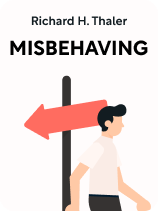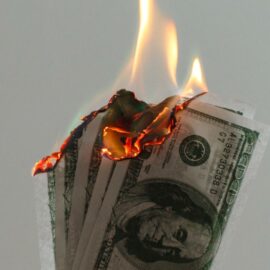

This article is an excerpt from the Shortform book guide to "Misbehaving" by Richard H. Thaler. Shortform has the world's best summaries and analyses of books you should be reading.
Like this article? Sign up for a free trial here.
What is the law of one price? How do closed-end funds violate the law of one price?
According to economist Richard H. Thaler, one argument against the efficient market hypothesis is the violation of the law of one price. This is a thesis from traditional economics that a security should never sell at two different prices at the same time.
Continue reading to learn more about why the law of one price isn’t consistent with the efficient market hypothesis.
Violation of the Law of One Price
What is the law of one price? Thaler explains that the law of one price follows directly from the EMH’s assumption that securities are always accurately priced. Under this assumption, it’s logically impossible for the same security to have two different prices, since that means at least one of the prices is different from the security’s intrinsic value.
(Shortform note: According to a slightly different understanding of the law of one price, this law admits that there can briefly exist price disparities of a security in different markets, but this disparity will quickly be eliminated by savvy traders. These traders, the argument runs, will exploit the price disparity by purchasing the security at the lower price in the first market and selling it at the higher price in the other market to earn a guaranteed profit. Consequently, they should drive the security’s prices to an equilibrium because buying the security at the lower price will drive its price up while selling it at the higher price will drive its price down.)
However, Thaler argues that closed-end funds violate the law of one price and therefore are inconsistent with the EMH. Closed-end funds, he explains, are investing funds—that is, pools of money from investors that money managers invest on their behalf—that raise money via an initial public offering (IPO) in which investors can purchase shares of the closed-end fund. The fund managers then use the money raised through this IPO to purchase stocks. For example, if the IPO raised $10 million, then the fund managers would invest this $10 million in the stock market as they see fit. Crucially, investors can then also buy and sell shares of the closed-end fund itself, although they cannot invest money directly into the fund after the IPO.
(Shortform note: Experts note that the largest closed-end fund—that is, the closed-end fund with the greatest assets—is the municipal bond fund, which invests in bonds issued by state and local governments. Such funds are advantageous to investors because they not only include only highly rated bonds (in other words, bonds with the lowest likelihood of defaulting) but also because the interest payments from these bonds are often tax-deductible.)
Thaler notes that, if the law of one price were true, the market price of closed-end funds should be equivalent to their net asset value—that is, the value of the assets that the fund owns. For example, imagine that after the IPO raised $10 million, the fund’s managers invested $5 million in Netflix which rose 20% (yielding $6 million in value) and $5 million in Google which rose 10% (yielding $5.5 million in value). Then, the IPO’s net asset value would be $11.5 million, and because investing in the closed-end fund is functionally equivalent to investing in its underlying assets, the law of one price states that the market price of the closed-end fund (its share price multiplied by its total number of shares) should also equal $11.5 million.
In practice, however, closed-end funds’ market prices are rarely equivalent to their net asset value. On the contrary, Thaler points out that closed-end funds typically trade at a 10-20% discount of their net asset value (though, occasionally, they also trade above net asset value), meaning that investors are essentially purchasing shares of the closed-end funds’ underlying assets for less (or occasionally more) than their market price. Either way, closed-end funds represent a violation of the law of one price.
| Violations of the Law of One Price in Cryptocurrency Markets In addition to closed-end funds, other violations of the law of one price can occur in cryptocurrency markets, which experts typically consider less efficient because they’re younger than more established markets such as the US stock market. According to Michael Lewis, the author of Going Infinite, these violations of the law of one price helped drive the rise of former cryptocurrency mogul Sam Bankman-Fried. Lewis writes that, when Bankman-Fried first opened his quantitative cryptocurrency trading firm, Alameda Research, he employed a program known as Modelbot to exploit price disparities in international Bitcoin markets. In essence, Modelbot identified Bitcoin price disparities in different markets—for example, it might find that Bitcoin was trading at $9,500 in South Korea and $9,550 in Japan—and automatically purchase Bitcoin at the lower price then sell it instantly at the higher price to net a profit. Through this program, Bankman-Fried earned upwards of a million dollars daily at one point. However, financial experts note that as Bitcoin markets became more efficient, these violations of the law of one price largely vanished by the end of 2018. |

———End of Preview———
Like what you just read? Read the rest of the world's best book summary and analysis of Richard H. Thaler's "Misbehaving" at Shortform.
Here's what you'll find in our full Misbehaving summary:
- Why the theory of traditional economics rests on a faulty foundation
- How consumers actually behave in economic situations
- Real-world cases of behavioral economics helping consumers






